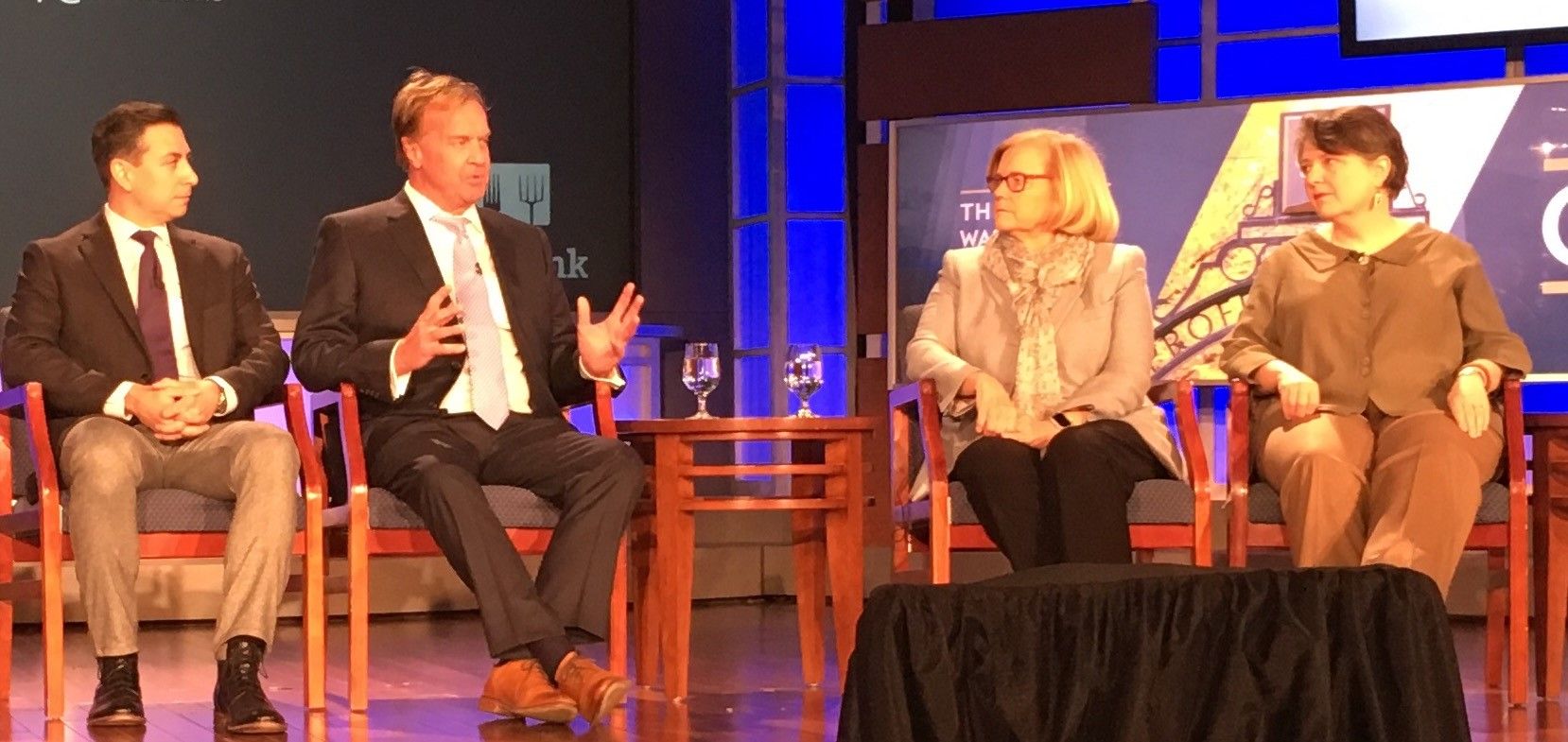At non-profit Food Tank’s summit in Washington DC last week, an impressive line-up of speakers from Congress, food and agriculture policy and research, and farming spoke on a panel about what to expect from the next Farm Bill.
The conclusion? It’s hard to say, particularly in today’s political climate. Under the Trump administration, Congresswoman Chellie Pingree, the Democrat from Maine (D-ME) said she was looking into “the foggiest crystal ball ever.”
Kathleen Merrigan, executive director of sustainability at the George Washington University (GWU) and deputy secretary of agriculture between 2009 and 2013 said it was “a time of chaos here in town.”
The speakers did outline their wishes for the Farm Bill, however, and offered some predictions for how certain areas would play out.
The Supplemental Nutrition Assistance Program (SNAP)
The food stamp program accounts for 80% of the Farm Bill, which has prompted opposition from some organizations that believe it should be removed from the bill and handled separately, or significantly reduced. The Heritage Foundation, a conservative think-tank, is a vocal opponent of SNAP’s inclusion in the Farm Bill. Food Tank speakers and audience members expressed fears that the organization had influence in the government, which could threaten SNAP.
“Heritage could write the whole thing,” said Congresswoman Pingree.
All the speakers were supporters of SNAP. Matthew Herrick from public affairs firm Story Partners said the US has the lowest rate of child food insecurity in history because of the program.
This positive impact has made SNAP very popular across the board, which will make it hard to remove, argued Joe Glauber, senior research fellow at the International Food Policy Research Institute.
Herrick also argued that it’s the heart and soul of the coalition that gets the Farm Bill done each year.
“We need to get the nutrition and ag folks together; without that coalition, you don’t have a Farm Bill,” said Herrick. “I’ve done some informal polling of the nutrition and ag folks, and they are already having conversations about what it will take to get it done. Heritage might have its own conversations, but if the coalition sticks together, we will get it done [with SNAP].”
Kip Tom, chairman of Tom Farms and an advisor to Trump’s administration, agreed that the bill couldn’t pass without SNAP, but also added that he would like to see a strong economy and more jobs to get people off the SNAP program.
Merrigan agreed that a “big tent” approach was needed but thinks SNAP will be cut back.
“I don’t think they will try to separate out SNAP; I don’t think it makes sense and the most seasoned characters know that. But they are going to try and cut it, and put different restrictions on it.”
Merrigan and Pingree both agree that with SNAP accounting for such a large portion of the bill, other initiatives are often pushed aside.
“When winding the last Farm Bill, most of the political debate was about how big SNAP would be, which meant other things, that were very important but in smaller ways, got forgotten,” said Pingree.
Agriculture R&D and agtech investment
Throughout the day, not just on the opening panel, speakers talked about the need to increase public spending on research & development and innovation.
Speaking at the very beginning of the event, Congressman Jimmy Panetta (D-C20) mentioned the need for more investment in agtech, particularly in his state of California where labor shortages are proving a big challenge for farmers.
“The Government needs to support funding for agriculture technology research, and also for the private businesses working with farmers on sustainable agriculture tools,” he said. “When we help our farmers and equip them with technologies and tools, we help all communities by increasing their access to nutritious products.”
Glauber said he hoped that the decline in government funding to ag R&D would be addressed in the new Farm Bill because of the tangible benefits R&D brings.
Public sector funding is needed in particular for land grant universities that can feed their discoveries into the private sector and on to farms, said Dan Glickman, executive director of the Aspen Institute Congressional Program, the nongovernmental, nonpartisan educational program for members of Congress.
Kip Tom is a strong proponent of agtech and has invested in a Silicon Valley startup that helps his business to understand how the farm works and protect it, and the environment, in the future. Speaking to AgFunderNews later in the day he said: “I believe technology is a cornerstone of our future success.”
Crop Insurance
“What people don’t understand is that the federal government subsidizes 60% of crop insurance,” said Merrigan, adding that she hoped it might change to encourage better environmental stewardship among farmers.
“Something I hope becomes a big issue, is if we will continue to offer crop insurance with no strings attached. I hope that we start to ask more of our farmers and ranchers, such as environmental achievements, for them to get that same subsidy. I’m not saying it should be a mandatory regulation that they have to achieve these goals, but if you’re offering crop insurance that tax payers are paying for, it’s a risk management strategy to ask them to achieve certain goals. And there’s precedent for that with some conservation goals.”
Story Partners’ Herrick spoke about renewable energy: “If I was a corn producer, I’d be asking questions about what kind of support I’d be getting for renewable energy because we’re getting mixed signals from the White House. It’ss very important for rural ag as the supply shocks [for bioenergy feedstock] really drove demand and gave farmers the opportunity to earn additional income.”
Other initiatives
“Under the big picture of the Farm Bill, we’re always talking about how to move a little bit of resource from commodity groups into the issues and areas we care about like local food, promotional farmers markets, and organic,” said Congresswoman Pingree, who is putting together a bill of issues to lobby for.
Organic food production is particularly poorly funded, she said, with less than 1% of funding going towards organic research, despite the growing demand.
She also spoke about the need to support small and medium-sized farmers, and to improve the scope of SNAP to incentive better food purchases. She suggested that could mean enabling SNAP card holders to buy double the amount of fresh produce from farmers markets, for example.
Food waste will also form a component of Pingree’s Farm Bill wish list.
What do you think will happen with the Farm Bill? Email [email protected]




